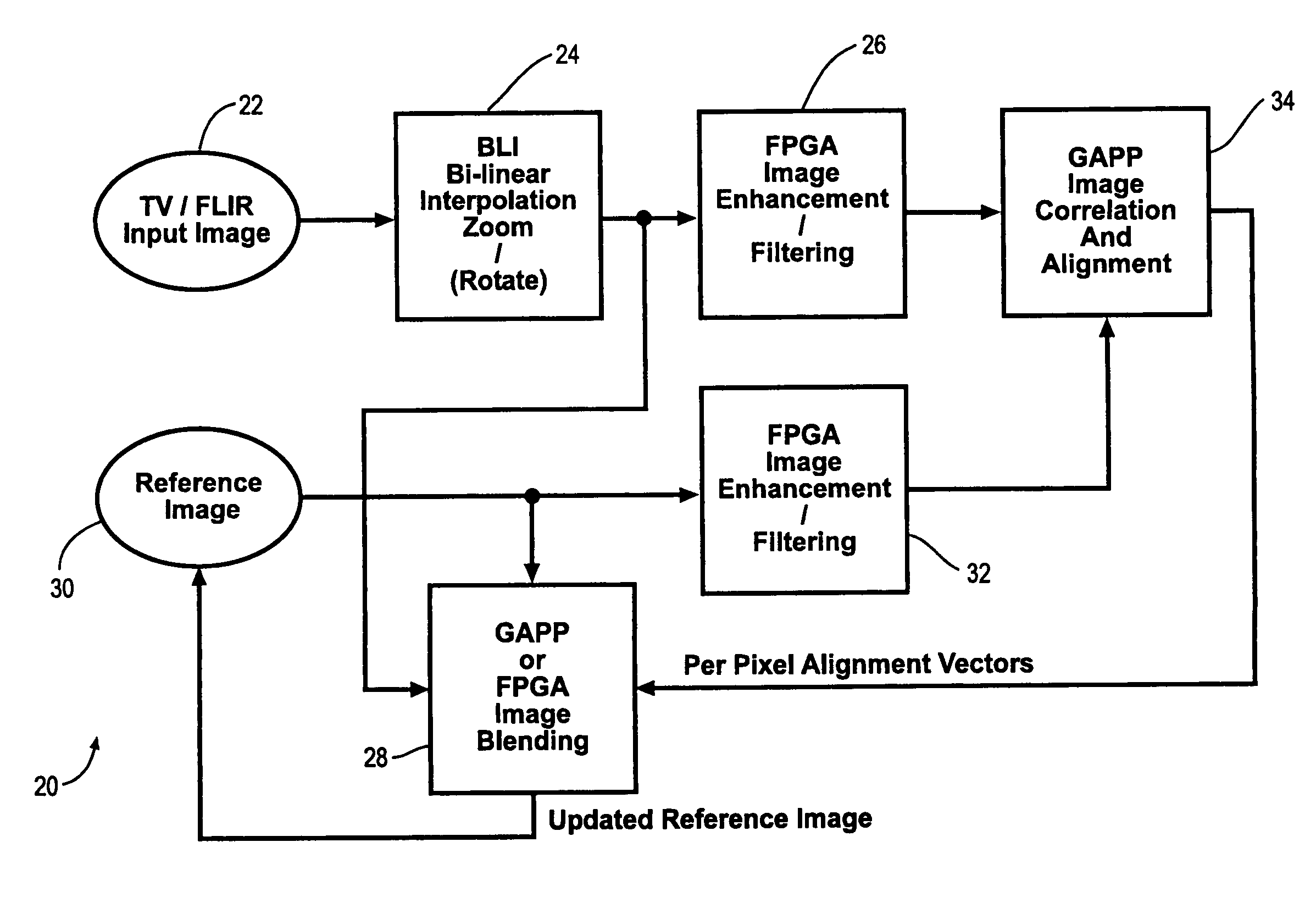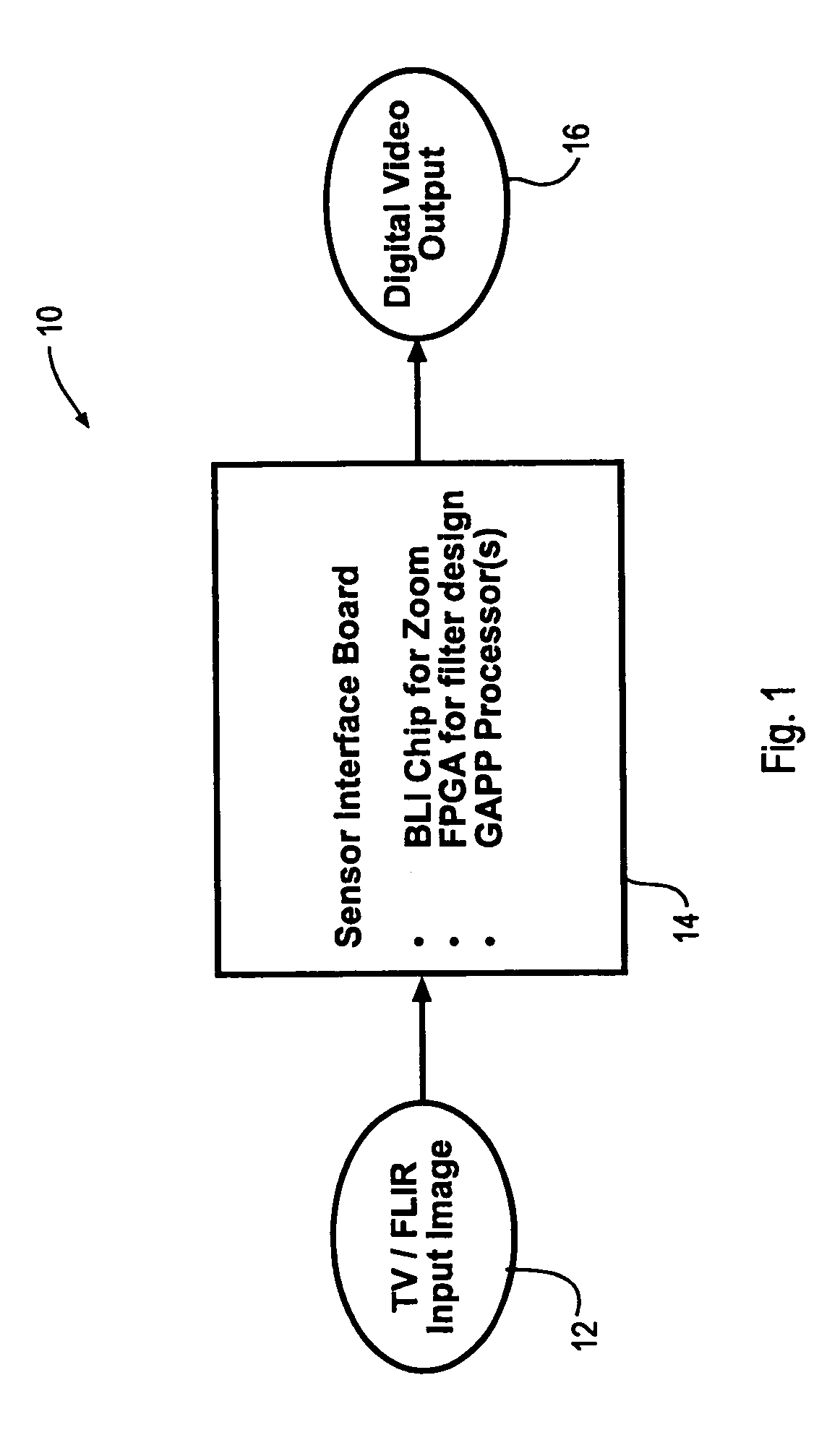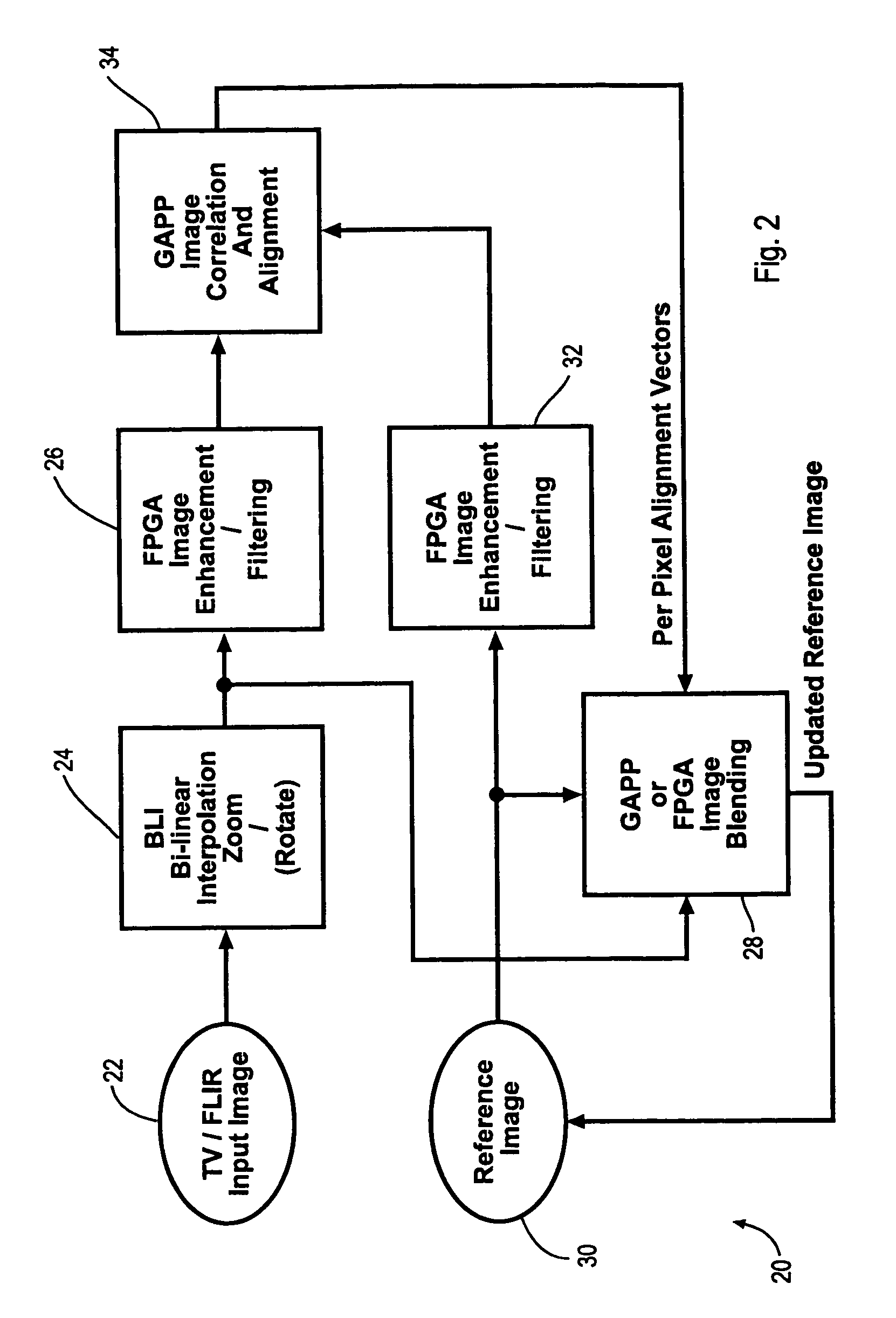Digital image enhancement using successive zoom images
a digital image and zoom image technology, applied in image enhancement, television systems, instruments, etc., can solve the problems of reducing the ability of a viewer to perceive, affecting the perception ability of viewers, and limiting the resolution of the sensors used
- Summary
- Abstract
- Description
- Claims
- Application Information
AI Technical Summary
Benefits of technology
Problems solved by technology
Method used
Image
Examples
Embodiment Construction
[0027]The present invention is of a system and method for enhancing digital images, particularly those acquired by EO systems. The invention dedicates a separate correlation tracking algorithm to each pixel within the desired output image. Using this technique, each pixel receives individual motion compensation based on matching the local neighborhood between the reference frame and the input image. The invention provides a larger coverage area than with existing technology, thereby providing enhanced imagery for any application, particularly for target detection. The invention also provides per-pixel motion compensation, with concomitant higher quality images, particularly in scenarios where the current XR technology would have difficulty.
[0028]The invention preferably performs a per-pixel registration of electronically zoomed successive video frames to provide enhanced image fidelity. Electronic zoom normally just creates pseudo-data between pixels; however, by temporally blending...
PUM
 Login to View More
Login to View More Abstract
Description
Claims
Application Information
 Login to View More
Login to View More - R&D
- Intellectual Property
- Life Sciences
- Materials
- Tech Scout
- Unparalleled Data Quality
- Higher Quality Content
- 60% Fewer Hallucinations
Browse by: Latest US Patents, China's latest patents, Technical Efficacy Thesaurus, Application Domain, Technology Topic, Popular Technical Reports.
© 2025 PatSnap. All rights reserved.Legal|Privacy policy|Modern Slavery Act Transparency Statement|Sitemap|About US| Contact US: help@patsnap.com



